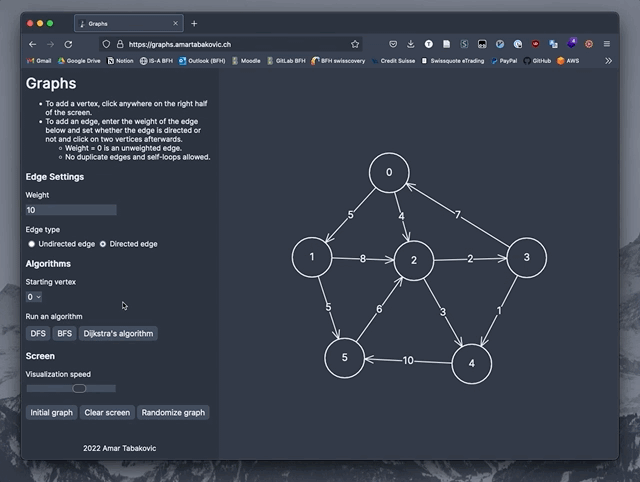When I was first learning about the graph data structure and its various algorithms, I came across several graph algorithm visualization websites which helped me improve my understanding of these algorithms. As a fun little personal project, I decided to implement my own web-based graph algorithm visualizer.

The application can be accessed under graphs.amartabakovic.ch. The source code is in the GitHub repository AmarTabakovic/graphs and is licensed under the MIT license.
Features
- Custom graph creation with (un)weighted and (un)directed edges
- Generation of randomized graphs
- Computation and visualiztion of the following algorithms from a chosen initial vertex:
- Depth-first search
- Breadth-first search
- Dijkstra’s algorithm
- Dynamically adjustable visualization speed